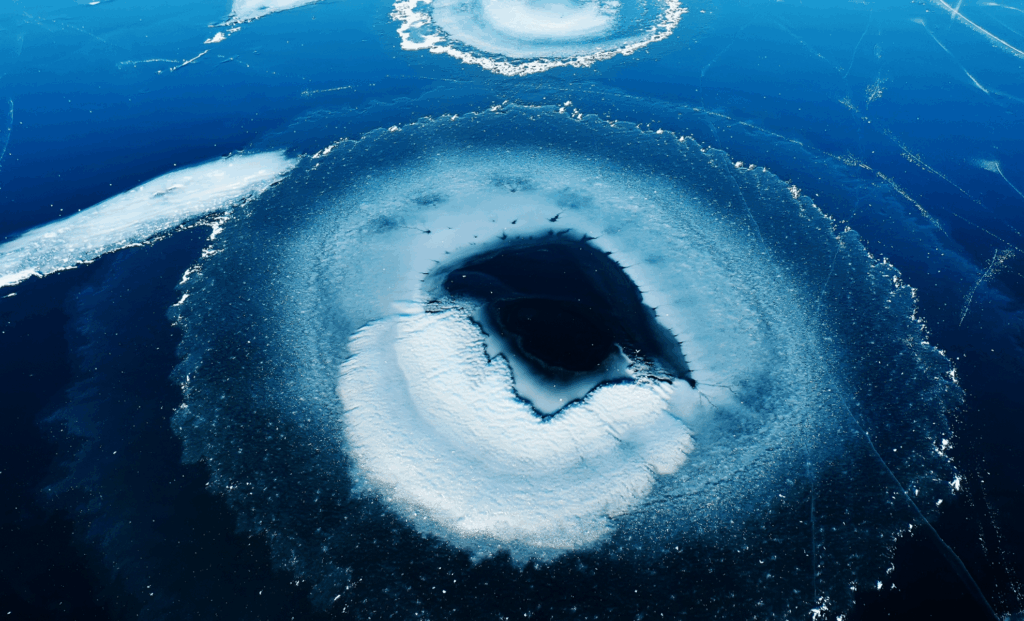Deep within the Indian Ocean lies an extraordinary feature that has puzzled scientists for over seven decades—the Indian Ocean Geoid Low (IOGL). This vast “gravity hole,” the largest of its kind on Earth, reaches depths of 330 feet below the global average and is a mystery that has long evaded explanation. Now, new research offers insights into the mantle processes that could be responsible for this deep anomaly. Through cutting-edge computer simulations and a deeper understanding of Earth’s dynamic layers, scientists are starting to unravel the complex forces at play beneath the ocean’s surface.
A Gravity Hole Like No Other
The Indian Ocean Geoid Low, located south of India, stands out as a giant gravity anomaly—one of the largest negative anomalies on Earth. To grasp why this is so significant, it’s important to first understand what the geoid is: it is essentially a model of Earth’s ocean surface, reflecting the gravitational field at any given location. Under perfect conditions, the ocean’s surface would follow this geoid, but due to variations in Earth’s gravity, some regions, like the IOGL, dip below the average level.
What’s so intriguing about this feature is that the seafloor itself appears unremarkable, devoid of any obvious scars or signs of tectonic activity. This raises an immediate question: what could be causing such a dramatic depression in the gravitational field, if not an obvious surface feature like a trench or volcanic activity? To answer this, scientists needed to look deeper, both literally and figuratively.

The Mystery of the Deep Mantle: Computer Simulations Provide Answers
In 2023, a breakthrough study led by researchers from the Indian Institute of Science (IISc) brought clarity to this longstanding mystery. By simulating mantle dynamics over the past 140 million years, the team provided a new explanation for the gravity anomaly. Their models showed how the sinking of ancient oceanic slabs into the mantle and the subsequent rise of buoyant plumes of hot, lighter material could explain the gravity signature observed at the surface.
The key insight from the study was that these plumes, rising from the lower mantle, could imprint their buoyancy on the gravity field, causing a distinctive dip in the geoid. This realization helped link the gravity anomaly directly to the movement and interaction of materials within Earth’s interior, rather than any superficial features like earthquakes or volcanic eruptions.
The researchers’ findings, published in Geophysical Research Letters, also suggest that the plumes responsible for this anomaly began rising about 20 million years ago, following the collision of the Indian and Eurasian plates. This process has been a slow, gradual one, with mantle dynamics evolving over millions of years to shape the geoid as we see it today.


Deep Mantle Dynamics: The Role of the African Hotspot
Understanding the underlying mantle processes that cause gravity anomalies like the IOGL requires a look at Earth’s deep interior. Beneath the African plate and extending into the Indian Ocean, there exists a vast region known as the “large low-shear-velocity province” (LLSVP). This region, marked by lower density and higher temperatures, acts like a massive thermal anomaly in the mantle.
When the cold, dense slabs of oceanic crust that once existed in the Tethys Ocean began sinking into the mantle through subduction zones, they collided with the hot, buoyant material of the LLSVP beneath Africa. The pressure from these sinking slabs helped to trigger the formation of upwelling plumes, which rose toward the Indian Ocean, altering the distribution of mass within the mantle and affecting the gravity field.
These plumes, which have been slowly drifting eastward, eventually led to the creation of the gravity hole observed today. This process highlights the interconnectedness of deep mantle processes and surface phenomena, providing a clearer picture of how movements in Earth’s interior can have far-reaching effects on the planet’s gravitational field.
Exploring the Depths of Earth: Seismic Data and Gravity Models
While computer simulations have shed light on the origins of the Indian Ocean Geoid Low, more data is needed to fully understand the complex interactions between mantle plumes and tectonic plates. Seismic waves, which provide valuable insights into the Earth’s internal structure, are crucial for refining these models. Slower seismic waves, which travel through hotter, less dense regions, help identify the locations of mantle plumes, while faster waves reveal the positions of cooler, denser slabs.
Researchers are now pushing for denser seismic coverage in the Indian Ocean region, particularly around the IOGL, to refine the depth and shape of the mantle plumes. By combining these seismic data with gravity measurements, scientists hope to create even more accurate models of Earth’s interior dynamics. These efforts will not only improve our understanding of the IOGL but also offer new insights into the broader processes that shape our planet.

